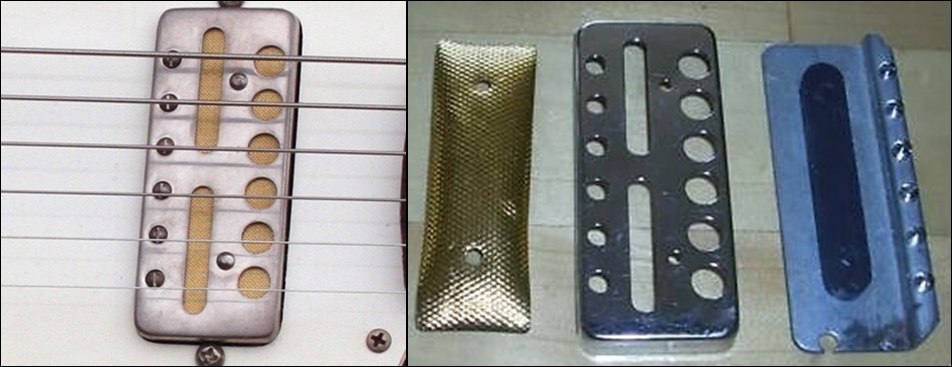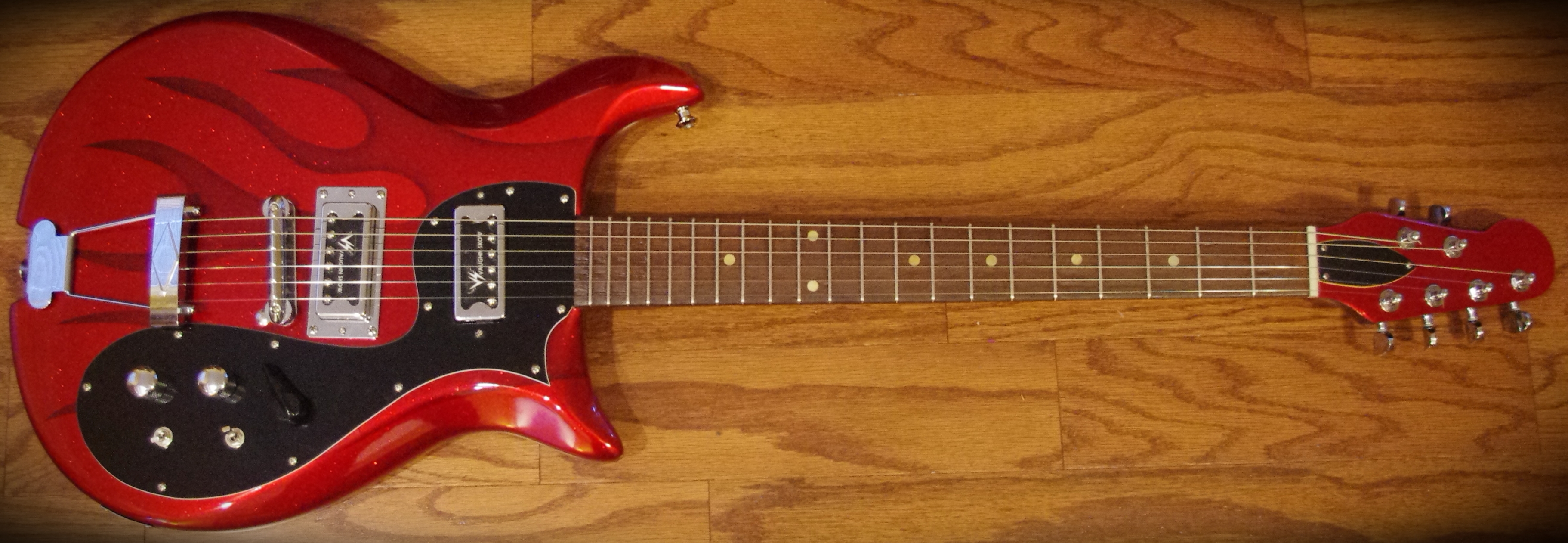Decoded: The HiLo-Tron and Goldfoil (Ry Cooder) Pickups
Decoded: The HiLo-Tron and Goldfoil (Ry Cooder) Pickups
Over the past few years I've re-built hundreds of pickups; many are the well known Fender style single coils and Gibson style humbuckers. However, I also work on and build a lot of lesser known models. I'd like to talk about two of these, the Gretsch style HiLo Tron and the most famous of all "Goldfoils", the one in Ry Cooder's "Coodercaster". Ya ready, let's dig in!

The reason I decided to group these two very different designs together is because they are both single coil pickups with "a little somptin' on the side". In the case of the HiLo Tron, the magnet is off to the side of the coil, and the Goldfoil has the individual adjustable pole screws off to the side. Both of these pickups were born in the "Golden Era" of electric guitar design before the rules were set in stone ... anything goes was the only rule!

Let's start with the HiLo Tron, and by the way, if you like watching more than reading, feel free to skip to the video at the end of this blog. Now, the HiLo Tron is often described as "half of a Filtertron", but that's not quite accurate. Yes, it DOES use one of the same bobbins as the two the filtertron sports, the same magnet, and a similar cover, but that's where the similarities end. The sound of a HiLoTron is quite different than a Filtertron. I often describe a Filtertron as sounding like a kinder, gentler, PAF, and likewise, the HiLo Tron sounds like a kinder, gentler P-90. Unlike the P90, and most every other single-coil pickup, the HiLo Tron actually has the magnet mounted to the SIDE of the coil, and the pole screws are Gaussed through an L-shaped piece of iron connecting the screws to the magnet, plus the other side (pole) of the magnet has a steel blade/pole attached as well. The result is a VERY quiet single-coil pickup that is not nearly as bright as the average Fender single coil, but is not nearly as dark and "barky" as a P-90. If this sounds like the tone you are looking for, you should seriously consider trying a set of HiLo Trons!
Two final notes on HiLo Trons. First, as is nearly always the case with vintage pickups, originals were not "calibrated" to neck and bridge positions, they were all wound the same; this generally resulted in a neck position that sounded great, but the bridge was quite anemic. When I make these, I wind the neck to true vintage spec, which is about 5000 turns of 43 gauge wire resulting in a pickup with about 5.5K of resistance and 3.5 Henreys of induction ... however, I wind the bridge with about 8,000 turns of 44 gauge wire for about 9.8K resistance and a whopping 7.4 Henreys of induction. The result: A great balance between the two positions, with a sweet and full neck and a full and rewarding bridge setting. Oh, and the last item, HiLo Trons combine in a way that can only be described as purely magical! The middle position is pure poetry, and I always suggest a series/parallel switch because BOTH combinations sound positively sumptuous!

Now on to the Goldfoil. Now, there have been quite a few versions of pickups with gold-foil tops, most of Japanese origin. The ones I'm discussing here are the type found in the neck position of Ry Cooder's Coodercaster (and the many copies), which have the pole-screws off to the SIDE of the pickup. With these pickups, the coil is wound directly around a fairly low-power magnet sitting directly on a steel base-plate and attached to the SIDE of this base-plate are adjustable pole-screws for each string. Many folks refer to these screws as "dummies" for looks only, but this is incorrect. The pole-screws are attached to a steel plate which is attached to the back side of the magnet. So, if the magnet is sitting with it's South pole up, the screws will be charged from the magnets North pole (or vise-versa); this design, as is the case with the HiLo Tron, creates a pseudo "dummy coil", resulting in a very quiet single-coil design, it also means that YES, those screws do have some affect, although not as much as they would were they going stright through the middle of the coil. What does a vintage goldfoil sound like, well not nearly as bright as we have come to expect from single coils! Depending on your taste, you might find a goldfoil to be downright muddy, or you might call it full and juicy. To my ears they are voiced very much like a P-90, but with a LOT less output ... a bit more mud and less bark.
Now, here are my notes on this style of goldfoil pickup. The originals used VERY low power magnets ... actually the same type as the ones that surround your refrigerator door. That, combined with the side-mounted pole pieces did in fact make for some dull and fluffy sounding pickups. I make mine with either Alnico 8 or 5 magnets, which provide much higher Gauss, this adds in a fair bit of top-end, not enough to make them bright, just enough to make them NOT dull! Compared to a Fender style single, they still have a lot less top-end. And once again, just as with the HiLo Trons, originals were not "calibrated" to neck and bridge positions, they were all wound the same; this resulted in a neck position that sounded VERY fluffy and the bridge was very low-output. When I make these, I wind the neck to true vintage spec, of about 5000 turns of 42 gauge wire resulting in a pickup with about 5.0K of resistance and 3.1 Henreys of induction ... and, I wind the bridge with about 8,000 turns of 43 gauge wire for about 8.3K resistance and 5.4 Henreys of induction. Once again this results in a great balance between the two positions, with a sweet and full neck and a full and NOT anemic or fluffy bridge setting. Oh, and like the HiLo Trons, goldfoils also combine beautifully! Again I always suggest a series/parallel switch because BOTH combinations rock!
Okay, y'all wanta geek-out with me in the shop? Well then take a look at this on-the-bench detailed look at the insides of these two great pickups!
So there ya have it! Nex up, I'll discuss a sweet 1965 Gretsch Corvette I brought back from the dead and outfitted with a pair of HiLo Trons, y'all come back now!

- VAUGHN SKOW's blog
- Log in or register to post comments

